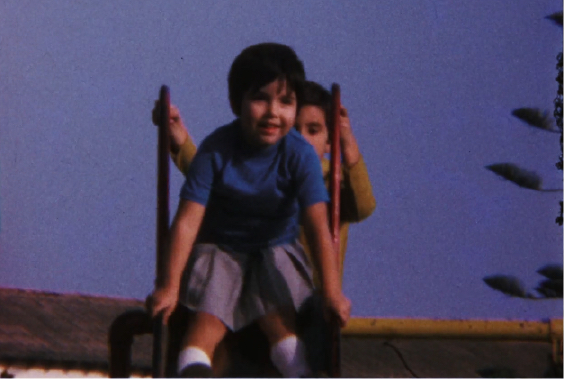Acquisitions
The Lillian Michelson Research Library, Pivotal Resource for Fifty Years of Hollywood Films, Finds New Home at Internet Archive
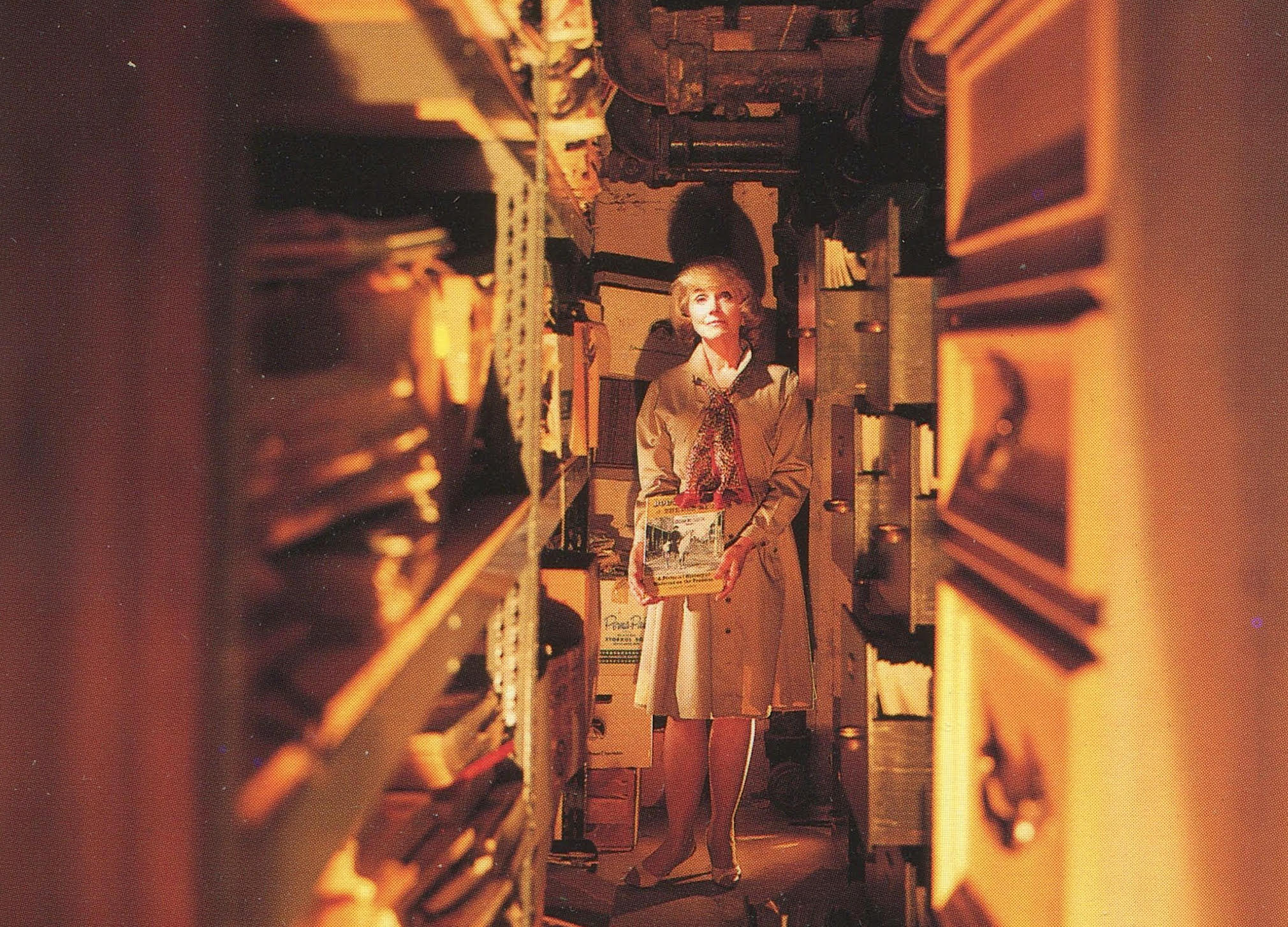
In the course of a decades-long quest to help filmmakers get the details right, researcher Lillian Michelson amassed over 30,000 photographs, 5,000 books, and 3,000 press clipping files. These items—over a million in total—joined the collections of the Internet Archive in December after more than a decade in limbo. The library, whose files shaped films like The Birds (Alfred Hitchcock, 1963), Rosemary’s Baby (Roman Polanski, 1968), and Full Metal Jacket (Stanley Kubrick, 1987), began its life at Samuel Goldwyn Studios. After eight years as a volunteer researcher there, Michelson took out a $20,000 loan to purchase the library in 1969. Her skill in ferreting out information is the stuff of colorful anecdotes: she contacted the FBI to learn what the inside of a Russian submarine looked like for The Hunt for Red October (John McTiernan, 1990), and staked out a Jewish deli to ask customers about the design of traditional women’s undergarments for a musical number in Fiddler on the Roof (Norman Jewison, 1971). From the 1970s through the 2000s, the library led an itinerant existence, finding a home at the American Film Institute, Paramount, Zoetrope, and Dreamworks. After Michelson retired following the 2007 passing of her husband Harold, a prominent art director and production designer, the collection went into storage at the Art Directors Guild, and has long been inaccessible to researchers. Thanks to Michelson’s donation, the Internet Archive will physically preserve and digitize the library’s holdings and make them available online.
The Michelsons’ life and work were chronicled in Daniel Raim’s 2015 documentary Harold and Lillian: A Hollywood Love Story; for more information on the donation, see here, here, and here.
Papers of Famed Playwright August Wilson, Author of Fences and Ma Rainey’s Black Bottom, Acquired by the University of Pittsburgh
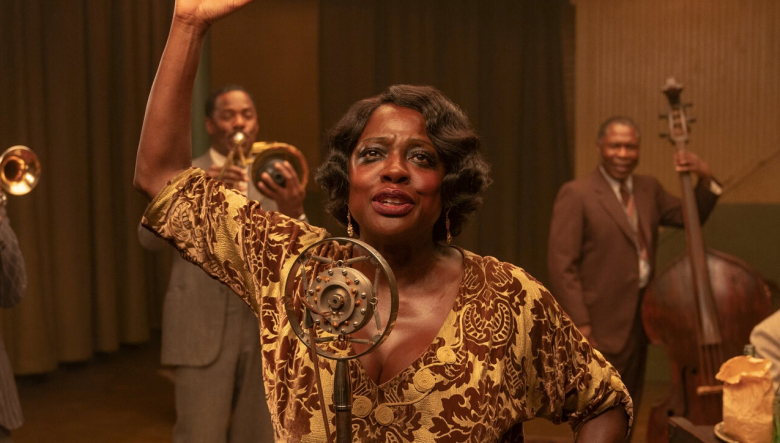
The archives of celebrated writer August Wilson, who chronicled the Black experience in his ten-play American Century Cycle, are returning to his native Pittsburgh, the setting of all but one of the cycle’s plays. The University of Pittsburgh announced the purchase of Wilson’s papers by agreement with his widow and executor Constanza Romero in late October. A two-time Pulitzer Prize winner for Fences (1987) and The Piano Lesson (1990), Wilson passed away in 2005. He was posthumously nominated for a Best Adapted Screenplay Oscar for the script of Fences (Denzel Washington, 2016). Wilson’s 1982 play Ma Rainey’s Black Bottom, his first to be staged on Broadway, was brought to the screen by Netflix in 2020, with George C. Wolfe directing.
The 450-box August Wilson Archive includes drafts for the entire American Century Cycle as well as unpublished plays and other writings; props and designs from his plays’ productions; correspondence, and audio and video recordings. The collection complements existing holdings of the University of Pittsburgh Library system, most notably the Kuntu Repertory Collection. This archive documents the history of the Black theater collective founded on campus in 1974 by Vernell Lillie, whose papers are also held by the library. Kuntu Repertory staged the first production of Wilson’s work, mounting his play The Homecoming in 1976.
Processing of the August Wilson Archive began in early 2021. For more on the acquisition, see here, here, and here.
American Radio Archives Donated to UC Santa Barbara’s Special Collections Library

One of the world’s largest collections of radio recordings and memorabilia, currently housed at the Thousand Oaks Library, is on its way to the University of California, Santa Barbara Library. Founded in 1984, the American Radio Archives (ARA)’s first major acquisition was the personal collection of bandleader Rudy Vallée, followed by the papers of Norman Corwin, known for his radio dramas of the 1930s and 1940s. Other major figures from the Golden Age of Radio whose archives are held at the ARA include comedian Red Skelton and popular radio serial writer Carlton E. Morse. The transfer to UCSB will centralize access to the collection—currently stored at multiple locations in Thousand Oaks—and facilitate its preservation and digitization in the Library’s audio laboratory.
The American Radio Archives complements the UCSB Davidson Special Collections Library’s unique strengths in recorded sound history. The library’s sound-related projects include the Cylinder Audio Archive, an online repository of over 15,000 digitized wax cylinder recordings, and the Discography of American Historical Recordings (DAHR), a database containing information on over 325,000 commercially released records, 11,000 of which can be listened to online through the Library of Congress’s National Jukebox. The LOC’s National Radio Preservation Board also supported the DAHR's recently implementation of linked data, which allows for information on artists from other online databases to be integrated with its interface.
To learn more about the American Radio Archives acquisition, see here and here; a guide to the collection is available here. See here for additional coverage of UCSB’s recorded sound collections.
Archives of Kartemquin Films, Cartoonist and Collector Craig Yoe Deposited at Washington University in St. Louis
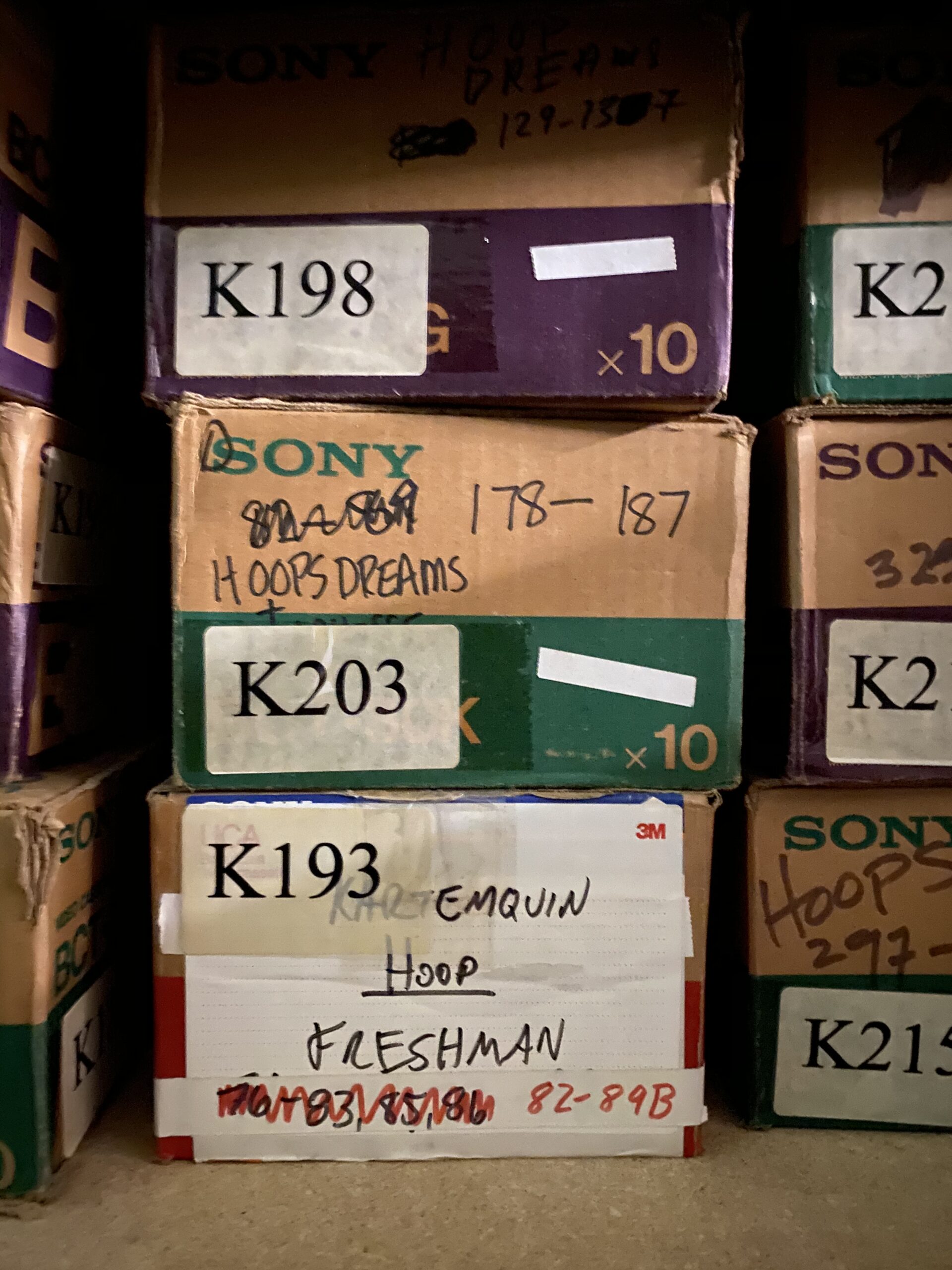
In the final months of 2020, the Washington University Libraries enriched its special collections with major acquisitions in the areas of documentary cinema and comic art.
As of mid-November, the university libraries will safeguard the physical holdings of Kartemquin Films, a socially engaged, non-profit production company whose films have garnered six Emmys, four Peabody Awards, and four Oscar nominations during its fifty-five-year history. The collection includes 3,500 film reels, over 11,000 videotapes and 2,000 audiotapes, and 440 boxes of papers documenting the production of acclaimed features like The Chicago Maternity Center Story (Gordon Quinn and Jerry Blumenthal, 1976), The Last Pullman Car (Gordon Quinn and Jerry Blumenthal, 1983), and Hoop Dreams (Steve James, 1994). The gift complements the library’s recently preserved trove of interviews conducted by Harry Hampton for the Eyes on the Prize television series (1987, 1990). Like the Harry Hampton Collection, the Kartemquin gift will offer a broadened perspective on documentary production by allowing scholars to study a wide array of materials not included in the finished product. Kartemquin’s digital productions will join the library’s collection in a future deposit.
Amassed over half a century, the collection of cartoonist and collector Craig Yoe is now part of the university’s D.B. Dowd Modern Graphic History Library. The trove of comic art spans the 1930s through the 1990s, encompassing thousands of books and hundreds of serials as well as original works of art, which often include extensive notes documenting the creative and editorial process.
More information about the collections is available here and here.
Collection of Documentary Filmmaker and Educator Vijaya Mulay to be Preserved by National Film Archive of India

Hundreds of books, periodicals, 16mm films, and VHS tapes amassed by Vijaya Mulay, a pioneer of India’s film society movement and close friend of Satyajit Ray, Mrinal Sen, and Louis Malle, are now part of the collections of the National Film Archive of India. Mulay’s daughter, the actor and filmmaker Suhasini Mulay, brokered the transfer of the materials. The collection includes examples of Vijaya Mulay’s work in educational film—including titles like Kishan and His Magic Chariot (1980)—and films by friends and family, including Malle’s documentary Calcutta (1969) and Bhopal: Beyond Genocide (1986). Co-directed by Suhasini Mulay, the film chronicles one of the most devastating industrial disasters on record: a poisonous gas leak from an insecticide plant that killed an estimated 15,000 people in 1984.
Suhasini Mulay also donated a hand-cranked 16mm Beaulieu camera used by Malle to shoot the television documentary series L’Inde fantôme (Phantom India, 1969) to the Film Heritage Foundation in Mumbai. Malle gifted the camera to her mother when he learned of Suhasini’s interest in making her own films.
Preservation
Netflix to Fund Restoration of Abel Gance’s Napoléon (1927), Sign of a Closer but Still Contentious Relationship with French Industry
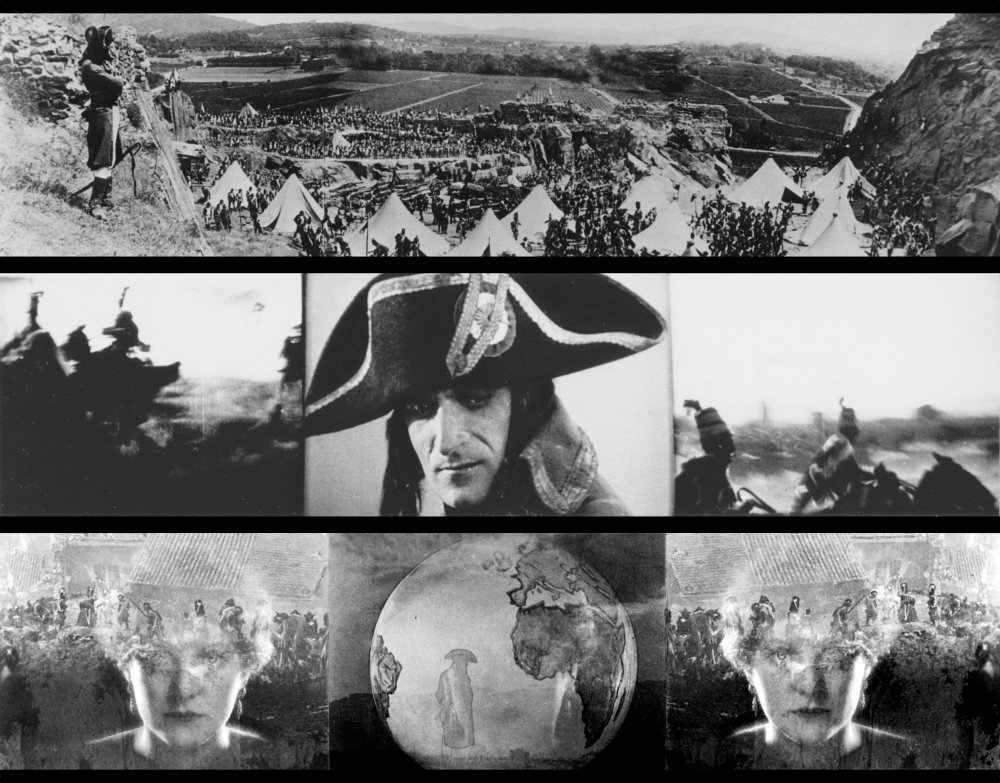
A year after opening a swanky Paris office, Netflix cemented its increasingly close relationships with French cultural institutions with a grand gesture. In mid-January, the streaming giant announced it would fund a restoration of Abel Gance’s 1927 film Napoléon in partnership with France’s national film agency, the Centre national du cinema et de l’image animée. The news comes as the French Ministry of Culture prepares to implement a decree requiring that streaming services put at least 25% of the revenue they earn in France towards domestic film production, with restoration work to count towards the total. Netflix also announced it would extend its partnership with the Cinématheque française to host a series of masterclasses and screenings. Past Netflix events at the archive include premieres of Martin Scorsese’s The Irishman (2019) and David Fincher’s Mank (2020).
Napoléon has long inspired restoration efforts on par with its epic scale: historian Kevin Brownlow worked on a five-and-a-half hour restored version for more than two decades between 1979 and 2000. The Netflix initiative will support the completion of a seven-hour reconstruction of the film begun by Georges Mourier in 2008. More information is available here.
Italy’s Titanus Studios to Release, Preserve Its Library Through Deal with Rai Com

Films by Luchino Visconti, Federico Fellini, and Dario Argento are among the over four hundred titles from the Titanus studio vaults to be distributed by Rai Com, the for-profit wing of Italy’s national public broadcasting corporation. The agreement between Titanus and Rai Com also provides for the preservation and restoration of the film library, with an initial list of twenty-nine features slated to be restored through the partnership. Films in the Titanus catalog include Pane, amore e fantasia (Bread, Love, and Dreams, Luigi Comencini, 1953), starring Vittorio de Sica; Fellini’s Il bidone (The Swindlers, 1955); and Visconti’s Rocco e i suoi fratelli (Rocco and His Brothers, 1960) and Il gattopardo (The Leopard, 1963), whose costly production played a role in tanking Titanus’s financial fortunes. More information is available here.
Repatriated from Russia, Georgian Silent Films Undergo Restoration
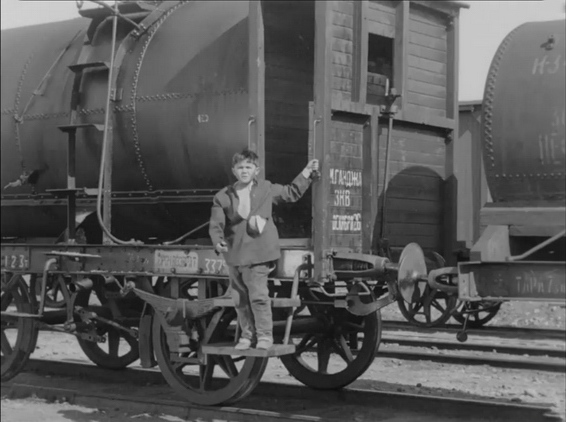
The Georgian National Film Center has completed the restoration of eight Georgian productions of the 1920s, the organization announced in December. The titles were selected from a cache of fifty-one films returned to the country by Gosfilmofond, Russia’s national film archive, since 2016. While the films’ negatives remain in Gosfilmofond’s vaults for safekeeping, the Georgian Film Center receives first-generation prints struck directly from the negatives. The initial round of restorations includes two films each by prominent Georgian theater director Kote Marjanishvili and Alexandre Tsutsunava, who directed the earliest Georgian feature in 1916. More information is available here.
In Brief:
StudioCanal has digitally restored Ousmane Sembène’s pioneering feature Mandabi (1968), the first West African feature to be shot in an African language, from a damaged 35mm interpositive print. Mandabi will receive a theatrical re-release in the UK and France in early 2021 and will be available on Blu-Ray and DVD from the Criterion Collection in the United States. More information is available here.
The National Archives of Estonia is slated to digitize nearly three hundred hours of newsreels produced between 1914 and 1991 beginning with N›ukogude Eesti, which launched in 1940 as the country’s first Soviet newsreel. The Tallinn-based Ratus OÜ and the Prasad Corporation in Hyderabad will carry out the digitization, with the Estonian National Film Database to catalogue the reels’ contents. Eight hundred newsreels, representing half of the National Archives’ collection, will be released online following the project’s completion in 2022. See here for more information.
Institutions and Organizations
Record-Breaking Number of Films by Women and Directors of Color Enter National Film Registry
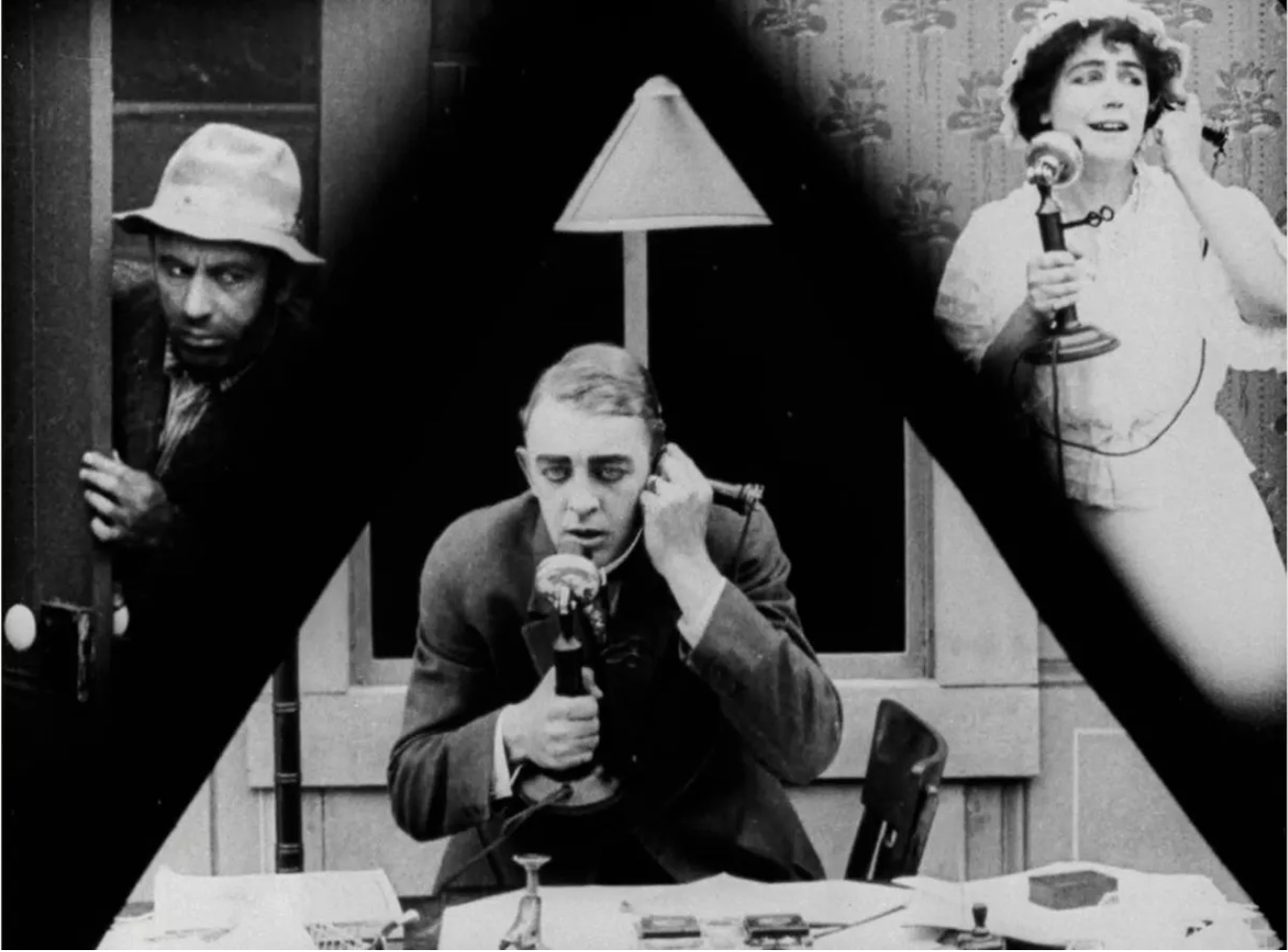
The National Film Registry’s 2020 picks include the largest number yet of films directed by women and people of color, numbering nine and seven titles, respectively. Selections include Lois Weber’s 1913 thriller Suspense; Outrage (Ida Lupino, 1950), a searing depiction of the aftermath of rape; the radical proto-Blaxploitation film Sweet Sweetback’s Badasssss Song (Melvin van Peebles, 1971); Julie Dash’s student film Illusions (1982), a keen indictment of Hollywood’s racial inequalities; Wayne Wang’s screen adaptation of Amy Tan’s novel The Joy Luck Club (1993); Lourdes Portillo’s El diablo nunca duerme (The Devil Never Sleeps, 1994), which delves into a mysterious death in her family; and Kathryn Bigelow’s The Hurt Locker (2008), which garnered her the only Best Director Oscar ever to go to a woman. Other highlights of the list include Grease (Randal Kleiser, 1978), Shrek (Andrew Adamson and Vicky Jenson, 2001), and Buena Vista Social Club (Wim Wenders, 1999). For more information and a full list of titles, see here.
Major Australian, Italian, and US Film Archives Under New Leadership
The UCLA Film & Television Archive, Cineteca del Friuli, and National Film & Sound Archive of Australia each experienced leadership shake-ups in recent months. In February, May Hong HaDuong assumed the directorship of the UCLA Film & Television Archive, becoming the first woman and the first person of color to hold that position. A graduate of UCLA’s Media Archival Studies program, HaDuong also worked as project manager of the Outfest UCLA Legacy, an ongoing collaboration with the local LGBTQ media festival.
After a brief stint at Italy’s Cineteca Nazionale, Paolo Cherchi Usai has stepped in as the conservator of the Cineteca del Friuli. The archive organizes the annual Giornate del Cinema Muto in Pordenone, Italy, an event that Cherchi Usai co-founded in 1982. Cherchi Usai previously served as Senior Curator of the George Eastman Museum’s Moving Image Department from 1994 to 2004 and again from 2011 to 2019, and held the position of director at Australia’s National Film & Sound Archive from 2004 to 2008.
One of Cherchi Usai’s successors at the NFSA, CEO Jan Müller, has resigned his position at the archive after a three-year tenure to return to his native Holland. MŸller previously worked as general director of the Netherlands Institute for Sound and Vision and chair of the Europeana Foundation, which operates a shared repository of digital collections held by institutions across the continent. At the NFSA, MŸller led an initiative to encode archival data for long-term storage using synthetic DNA.
In Brief:
The Cinemateca Brasileira, whose ongoing crisis has been covered in detail in this column, has been given a brief reprieve. In the final days of 2020, the federal government awarded a temporary 90-day contract to administer the archive to the Sociedade Amigos da Cinemateca, allowing for the re-hire of over forty staff members. Arrangements for the Cinemateca Brasileira’s long-term management are still in flux.
The National Film Archive of India will be folded into the National Film Development Corporation together with three other entities dedicated to the production and promotion of Indian cinema: the Films Division, Directorate of Film Festivals, and Children’s Film Society. Officials cited the opportunity to streamline the agencies’ operations and more effectively monetize their content libraries as motivations for the merger. More information is available here, here, and here.
The Pakistan National Council of the Arts (PNCA) is soliciting donations of DVDs, DCPs and other digital audiovisual formats to establish the National Film Archives, the Express Tribune reported in December. The PNCA’s plans for addressing the unique preservation challenges posed by digital media were not immediately clear. Following the disbanding of Pakistan’s National Film Development Corporation, the PNCA has worked to promote domestic film production through a partnership with the Pakistan Film Producers Association and plans for the creation of a national film school in Islamabad.
ACMI, formerly known as the Australian Centre for the Moving Image, will reopen in February 2021 following a $40 million renovation and the reworking of its permanent exhibit to address a broader array of moving-image forms, including virtual and augmented reality. See here for more.
A new facility for the former Yale Film Study Center—now the Yale Film Archive—is under construction in the Sterling Memorial Library. The space will be equipped with a preservation laboratory, climate-controlled storage for collection items, and a screening room with 16mm, DCP, and 3D projection capabilities. Learn more about the renovation here.
Publications and DVDs
New Volume Showcases Lost Works of Early French Cinema Recovered from Flipbooks
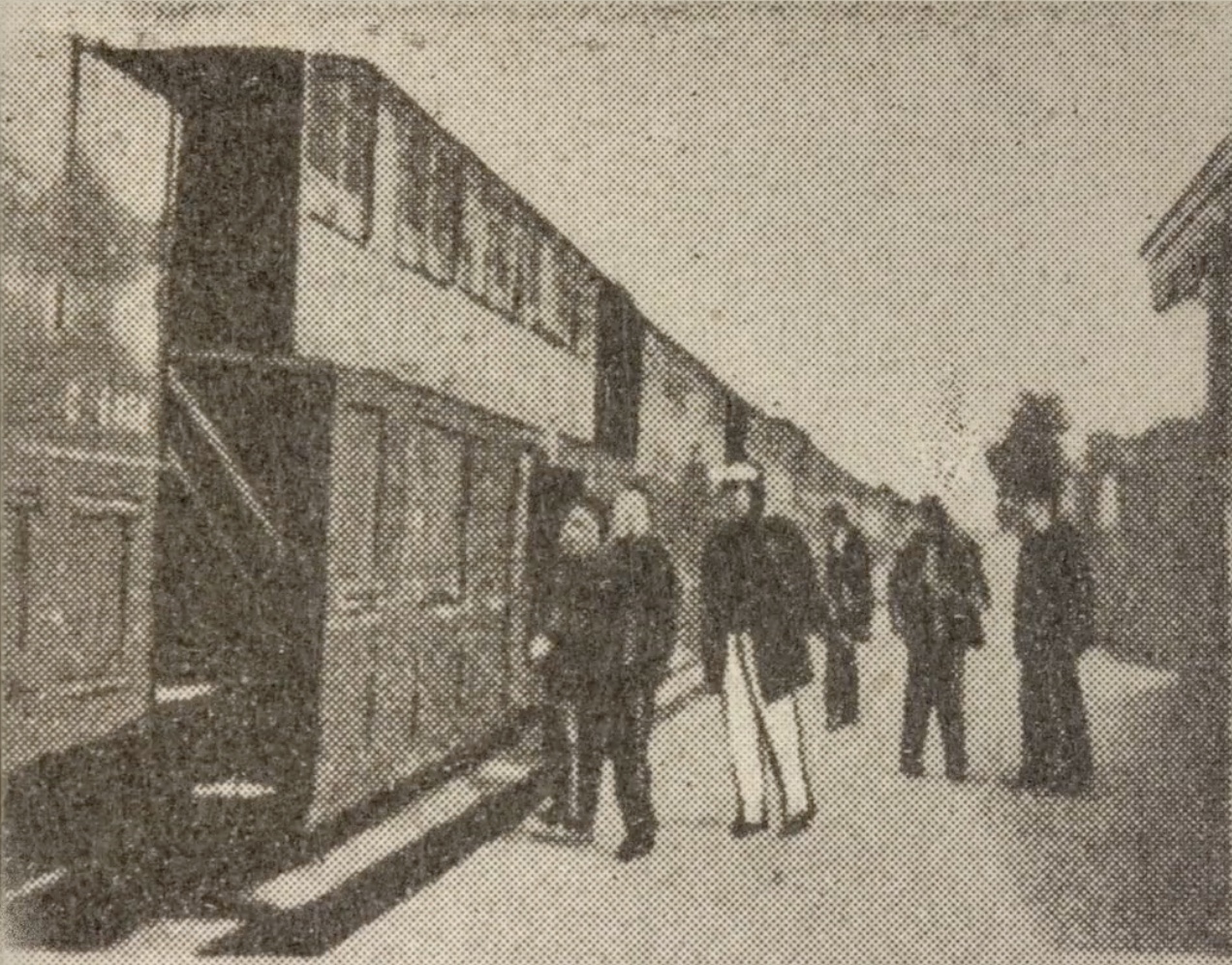
Films by Georges Méliès, Alice Guy-Blaché, Pathé, and Gaumont that were thought to have permanently disappeared can now be revisited in printed form. A new book from John Libbey Publishing chronicles the retrieval of these early works of French cinema from nineteenth-century flipbooks, or folioscopes, printed and sold by Léon Beaulieu.
Beaulieu’s folioscopes first came to the attention of scholars after animator Bernhard Richter purchased one of the flipbooks at an antique store. Noticing the similarity between its images and a lost Méliès film that mimicked the Lumière Brothers’ L’arrivée d’un train en gare de La Ciotat (The Arrival of a Train to La Ciotat, 1895), Richter sent out an online call for information on the flipbook’s origins. Intrigued, researcher Thierry Lecointe set out to investigate Richter’s speculation. Visiting Paris-area train stations and consulting historic postcards allowed Lecointe to identify the source of the folioscope’s images as Méliès’s L’arrivée d’un train (gare de Joinville) (Arrival of a train [Joinville Station], 1896). Having confirmed that Beaulieu’s flipbooks were drawn from early films, Lecointe contacted collector Pascal Fouché, who owned all twenty-four folioscopes produced by Beaulieu, and worked to identify their sources. Robert Byrne of the San Francisco Silent Film Festival re-animated the folioscope images in collaboration with Onno Petersen. The reconstructed versions, which premiered at the 2019 festival, can be viewed here. More information on Beaulieu’s folioscopes is available here and here; Fouché’s full collection of folioscopes can be browsed here.
Cineteca di Bologna Publishes Script, Pre-Production Materials for Chaplin’s Unfinished Film The Freak
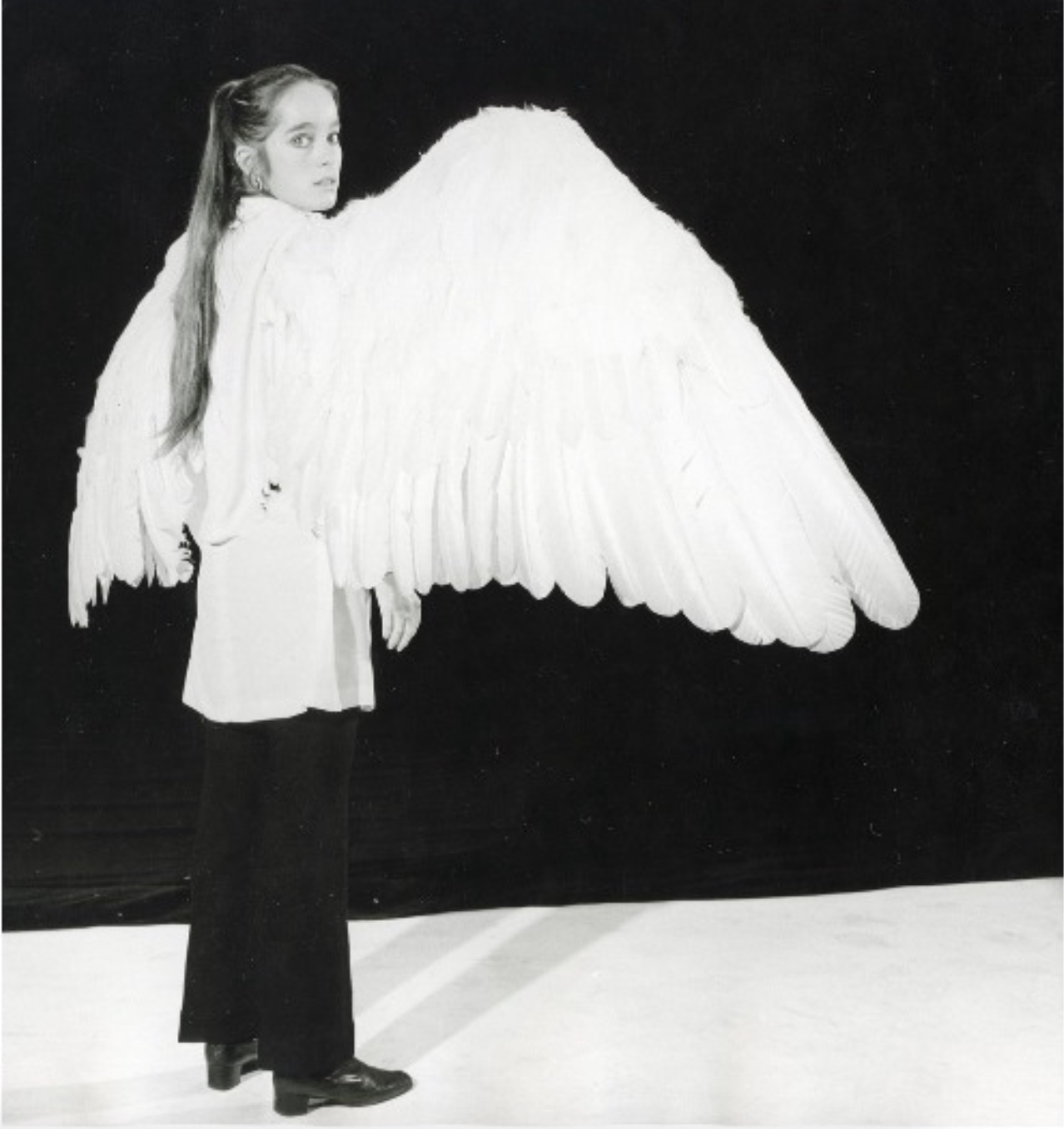
The full script of Charlie Chaplin’s final film project The Freak, a darkly comic tale of a young girl with wings who is kidnapped and exhibited as a sideshow attraction, is available for the first time in a new book from the Cineteca di Bologna. Edited by Cecilia Cenciarelli with commentary from Chaplin biographer David Robinson, the book also features extensive pre-production materials found among the papers of producer Jerry Epstein, acquired in recent years by the archive. These materials include close to 3,000 pages of correspondence, production designs, and images from filmed rehearsals with Chaplin’s daughter Victoria, who was slated to play the leading role.
Released in December, the Italian-language edition of the book is available here. A series of translations are planned for 2021. For more information, see here and here.
Online Resources
Classic Titles Now Streaming from National Film Centre of Latvia
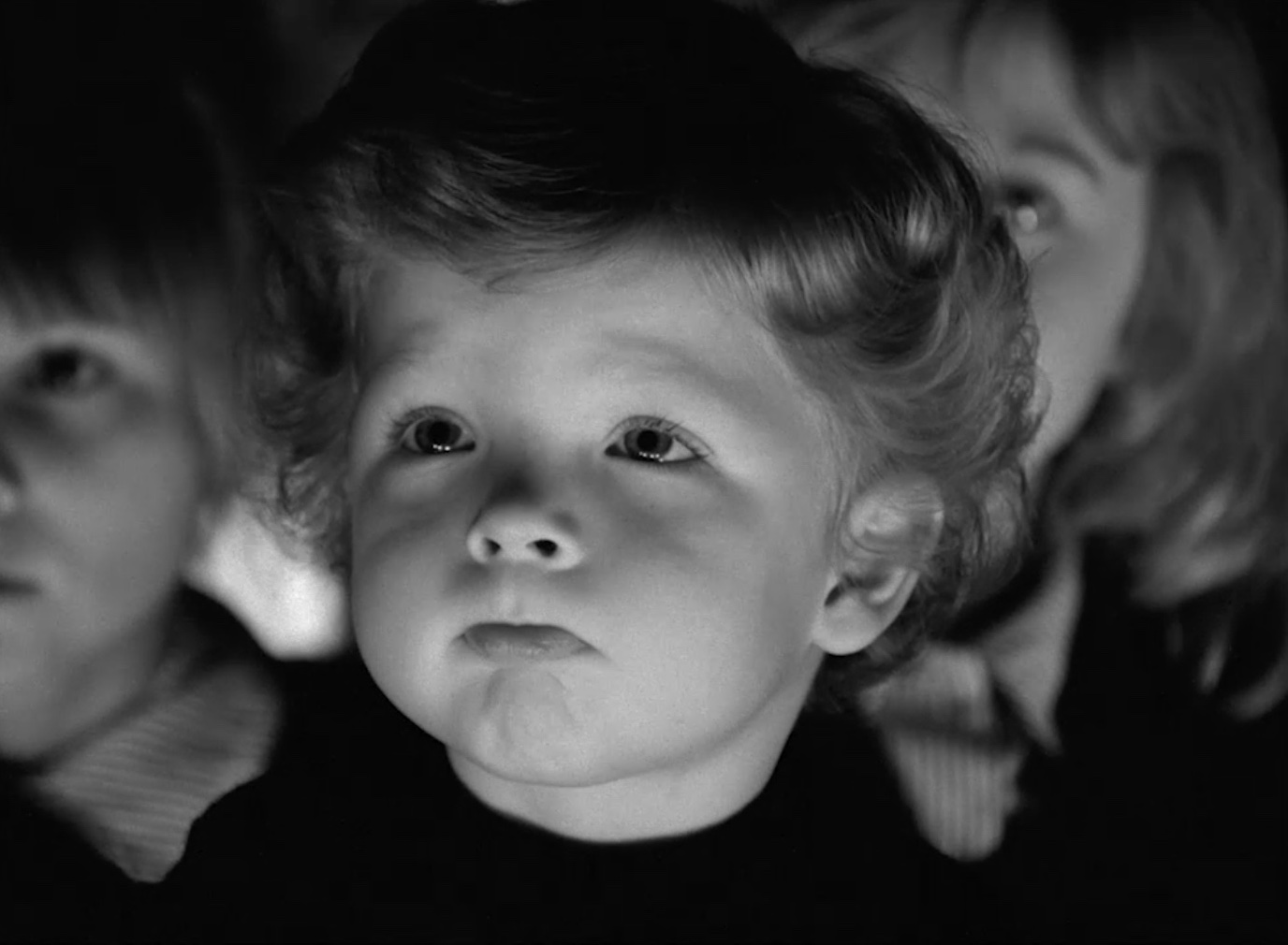
Nineteen works of Latvian cinema with optional English subtitles, most dating from the 1960s through the 1980s, are now freely available to stream on the National Film Centre of Latvia’s website. Several of the selections showcase Latvian cinema’s penchant for period pieces, including the silent feature Lāčplēsis (Aleksandrs Rusteiķis, 1930), an epic tale set during the Livonian Crusades (a 13th-century campaign to Christianize the Baltic region) and two narratives of the post-WWII period and the anti-Soviet partisan movement, the thriller Kad lietus un vēji sitas logā (When rain and wind knock on the window, Aloizs Brenčs, 1968) and the romantic drama Svešās kaislības (Strange passions, Jānis Streičs, 1983). Other collection items include examples of the Riga School of Poetic Documentary Cinema like Vecāks par 10 minūtēm (Ten minutes older, Herz Frank, 1978), which captures the changing expressions on the face of a young spectator at a puppet show, and animated films like Ki-ke-ri-gū (Cock-a-doodle-doo, Arnolds Burovs, 1966), an early example of a long-standing national tradition of stop-motion animation. See here for a guide to the online collection.
Latin American Home Movie Collections Debut Online
Two new troves of home movies and amateur cinema from Latin America, both featuring material from the 1960s and 1970s, are now available online. A project of the Elías Querejeta Zine Eskola film school located in San Sebastián, Spain and the Cine Íntimo initiative led by Efráin Bedoya and Verónica Ríos, the newly launched Cineamateurperuano.org features several excerpts of digitized films shot in Lima, Machu Picchu, Cuzco, Iquitos, and beyond. Several of the films are available temporarily in honor of Home Movie Day 2020. Cine Limite, a site devoted to promoting Brazilian cinema abroad, completed the digitization and upload of ten 8mm films from the collection of Tiago Compagnoni in January. The films can be viewed here.
In Brief:
In November, Rotten Tomatoes, the popular aggregator of film reviews and ratings, introduced its Archival Hub, a portal for historical film criticism coordinated by Tim Ryan. Highlights include reviews and ratings for over a hundred lost and unfinished films; work by female critics like Iris Barry, Pauline Kael, and Molly Haskell; and reviews from Spanish-language and LGBTQ periodicals. More information is available here.
The Texas Archive of the Moving Image and Texas Film Commission launched the online exhibit “Wave to the Camera,” TAMI’s first for the Google Arts and Culture platform, in December. The exhibit features over a hundred excerpts from home movies shot in the state, which document milestones of everyday life and traditions rooted in the state like quinceañeras, rodeos, and border parades. See here for more on “Wave to the Camera.”
The Kinematograph Weekly, a leading film industry trade paper published in the United Kingdom under various titles between 1904 and 1971, is now available from the British Newspaper Archive, a subscription-based service. Browse the periodical’s run (digitized through 1960) here; for more on The Kinematograph Weekly, see here.
A dozen radio shows featuring comedienne Carole Lombard, recorded between 1937 and 1941, are now freely available on TheScrewballGirl.com, a site dedicated to the actress created by film scholar Olympia Kiriakou.
Over a thousand hours of interviews recorded over three and a half decades for American Masters, a PBS/WNET documentary series profiling key figures in American culture, are now freely available via the American Archive of Public Broadcasting. Visitors to the online archive can also access searchable transcripts of conversations with creatives like Maya Angelou, Patti Smith, Roger Corman, and Mel Brooks.
In advance of the seventy-fifth anniversary of the Nuremberg Trials, Holocaust Memorial Museum in Washington, DC has made 775 hours of audio recordings of the proceedings and thirty-seven reels of film used as evidence in the trials freely available online. The materials are held by the International Court of Justice in the Hague, which worked to digitize the recordings in partnership with the Holocaust Memorial Museum and the Mémorial de la Shoah in Paris. More information is available here.
Nearly four hundred reels of stock footage from the 1950s amassed by the United States Information Agency are now available online from the US National Archives. A searchable catalog can be accessed here.
A new website dedicated to the work of Brazilian director Geraldo Sarno, known for films that delve into national history and explore the mythology of Brazil’s arid Northeast, launched in December. Created with support from the state government of Bahia, the site features a selection of Sarno’s features, shorts, and television programs that can be streamed for free, along with scripts and pre-production documents, interviews, press clippings documenting his films’ reception, and academic studies of his work.
The Encyclopedia of Philippine Art, a publication of the Cultural Center of the Philippines, can now be accessed online via subscription. The encyclopedia contains dozens of articles on film, including coverage of Philippine cinema’s development, individual films and directors, and more expansive topics such as genres and audiences.
“Archival News” reports on recent news highlights from the media archive community for the Journal of Cinema and Media Studies readership. Some information in this column comes courtesy of the Association of Moving Image Archivists (AMIA) listserv, along with institutional newsletters, websites, and press releases. This column is updated quarterly. Contributions to this column are welcomed. Information should be sent to Rielle Navitski, Theatre and Film Studies, University of Georgia, Fine Arts Building, Athens, GA, 30602-3154, email: [email protected]. For news and finds from online media archives, follow @archivalnews on Twitter and Instagram.

